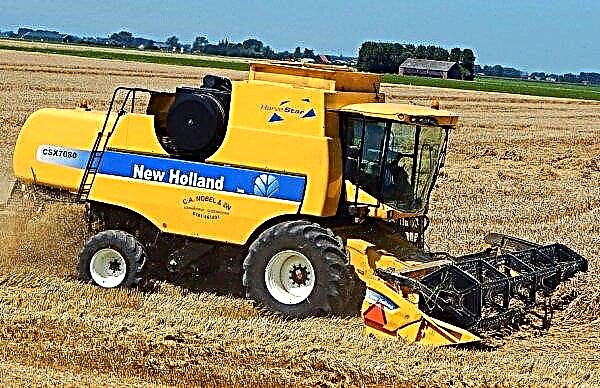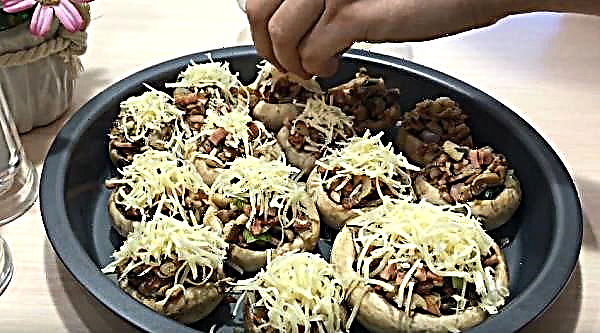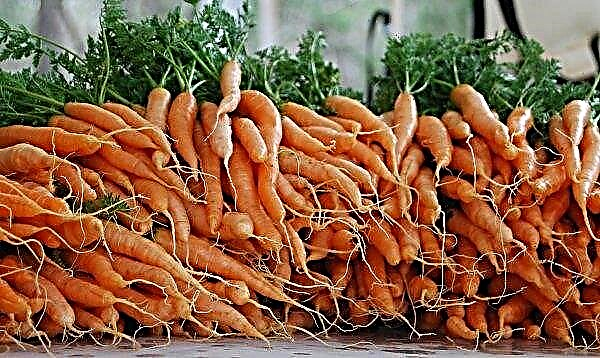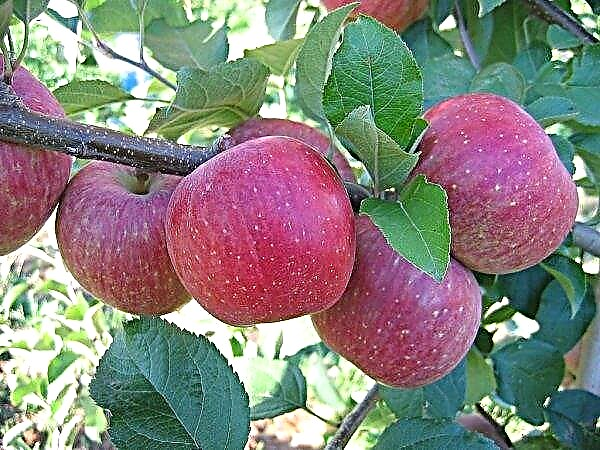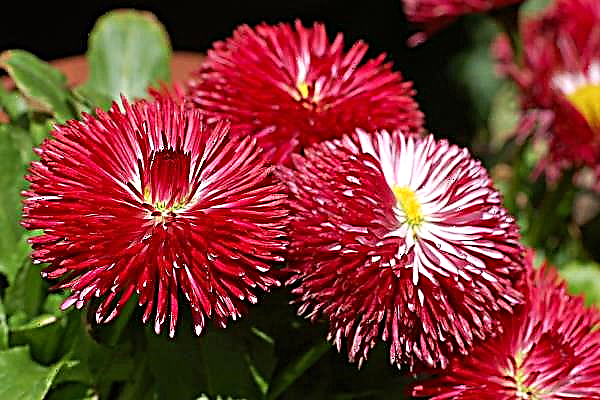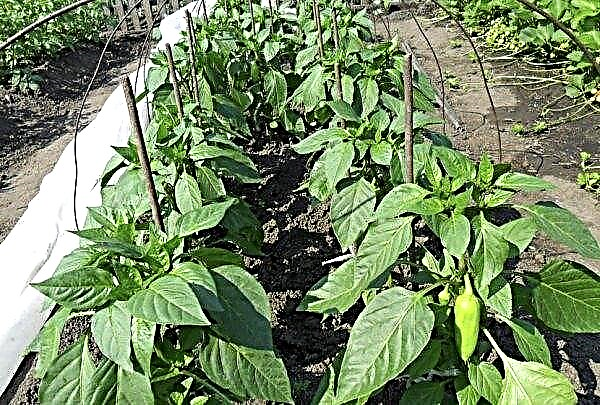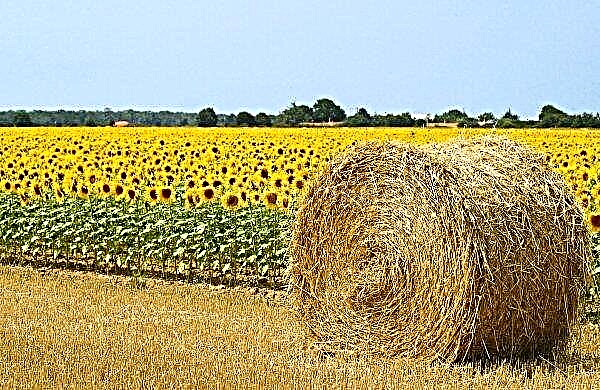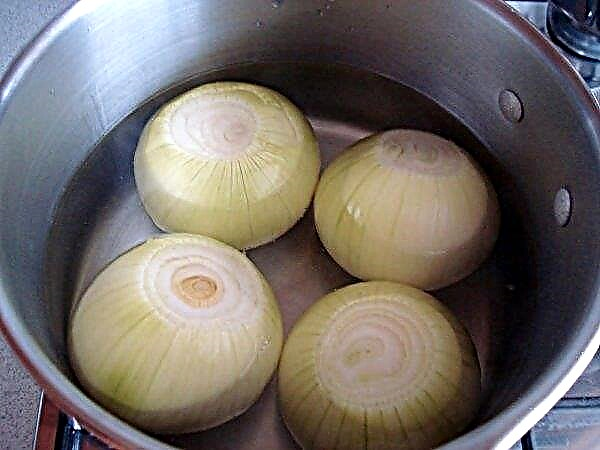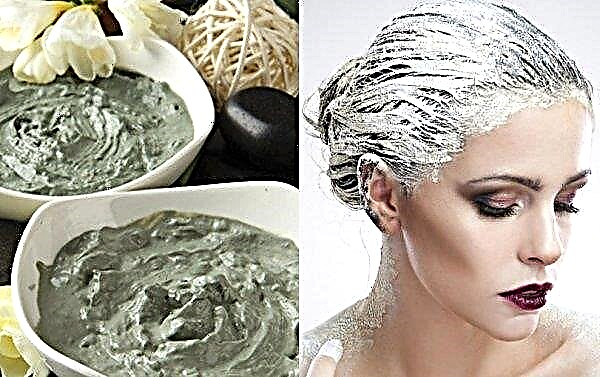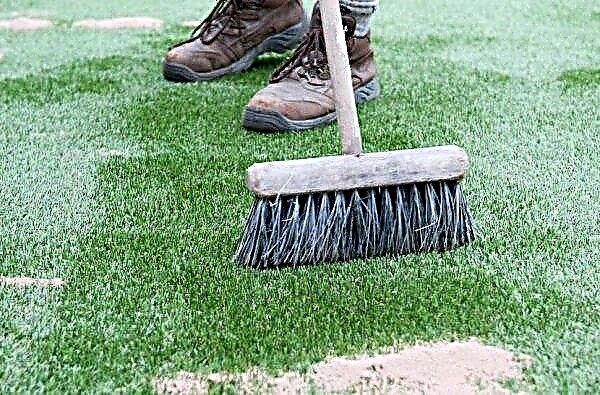Banba - a young potato variety
Description and characteristics of the variety
This potato variety bearing the name of the legendary Queen Banba was created not so long ago in Ireland with the participation of Dutch breeders. As a result, early-ripening Banba potatoes turned out to be high-yielding, with extremely tasty fruits and their excellent presentation, not afraid of drought and most potato diseases and pests.
Did you know? If potato tubers are an excellent food product, then berries growing on the same bush are a real poison.
Characteristics of tops and tubers
The tops of adult potato bushes of the described variety reach a height of 60 cm, is a foliage of dark green color and slightly corrugated and yellowing at the base of the stem. The flowers are painted white and bloom long enough.

Oval or flat round tubers reach a mass ranging from 100 g to 150 g. With proper care, a bush of potato cultivar Banba can produce up to 6 kg of root crops. The potatoes are covered with a thin peel of dark yellow color, and the flesh is distinguished by a light yellow color, a high content of starch and excellent taste, which experts rate no less than 4.9 points out of 5 possible.
From the point of view of consumer qualities, this potato belongs to the culinary type AB and is well suited both for frying, cooking chips and french fries, and for cooking, during which the tubers do not boil and do not lose their taste.
Ripening time
Belonging to early varieties, Banba potatoes are laid in short ripening periods, lasting only from 80 to 85 days.

Disease resistance
The immune system of this potato variety at the genetic level determines its resistance to the disease with common scab, black leg, leafy late blight, potato cancer. But he opposes late blight of tubers not so effectively.
Advantages and disadvantages
- For a relatively short period of cultivation of this potato variety, vegetable growers identified such positive qualities:
- excellent gastronomic properties;
- the nutritional and usefulness of tubers;
- good presentation;
- universality in application;
- drought tolerance;
- high productivity;
- good keeping quality;
- excellent transportability;
- resistance to many potato diseases.
Did you know? Every inhabitant of our planet eats an average of 33 kg of potato, which is grown in 126 countries out of 196 existing in the world today.
- The few disadvantages of the variety include:
- the ability of tubers in the sun to quickly turn green and become unfit for consumption;
- lack of ability to withstand late blight of tubers;
- poor tolerance of frost.
Growing Features
The ability of the Banba potato variety to adapt well to various types of soil and its unpretentiousness when growing significantly simplify the tasks of vegetable growers during the cultivation of this root crop.

However, it is necessary to be guided by some agrotechnical rules that contribute to obtaining a higher crop. For example, the quality of tubers, their quantity, and weight depends on a competent planting of a vegetable.
Seat selection
Although this potato variety is not picky about the type of soil, nevertheless, it develops better and gives a larger crop on chernozem and loam. The area where the vegetable will be grown should be well lit, although a small partial shade is allowed.
Potato bushes, especially young ones, must be protected from the effects of winds. A large role in the well-being of potato bushes is played by the vegetable predecessors that previously grew on this site.
- Potatoes grow best after:
- cereals;
- cabbage;
- peas;
- beans;
- root crops;
- Pumpkins
- melons
- watermelon;
- cucumbers.
- In no case should you plant potatoes in areas where previously grown:
- sunflower;
- sorghum;
- Tomatoes
- pepper;
- tobacco;
- eggplant and other nightshade.
The timing
The timing of planting potato bushes depends on the climatic conditions of a particular region. Since this variety is sensitive to the effects of frosts, it should be planted when the threat of spring return frosts has completely passed. Most often this happens at the end of May. The most favorable temperature for planting lies between + 15 ° C and + 20 ° C.
 Late planting of potatoes is fraught with a noticeable decrease in yield.
Late planting of potatoes is fraught with a noticeable decrease in yield.
Soil composition
As already mentioned, the Banba potato variety is not picky about the type of soil. However, in order to obtain a high yield, the quality of the soil should be maximized. Most comfortable potato feels in loose, permeable to air and water, sandy, loamy or sandy loamy soil.
The low density of the soil in the environment of the zone where the tubers are formed contributes to an increase in the yield of the bush. In the area intended for planting potatoes, in the autumn the soil is dug to a depth of at least 30 cm with the introduction of superphosphate fertilizers. For soil with high acidity, adding slaked lime and compost is sufficient.
Immediately before planting, the soil is again dug up and disinfected with a concentrated manganese solution, after which it is harrowed. In the holes dug in the soil, fertilizing is added in the form of wood ash, onion husks and a small amount of humus. 
Preparing for planting planting material
Having selected small and medium tubers with a large number of eyes and without visible damage as planting material, they should be germinated a week before planting.
To do this, they are laid out in one layer in a well-lit place at room temperature and sprayed with growth stimulants in the form of:
- “Binorama”;
- Planriza;
- "Gamair";
- Alirina-B.
When the sprouts on potatoes reach a length of 4-5 cm, planting material can be planted in the ground.
Landing technology
In the prepared soil, dig holes with a depth of 10 cm at a distance of at least 30 cm from each other. If potatoes are planted in several rows, then the distance between them should be 90 cm.  Usually per 1 sq. Km. m is located up to 6 bushes of potato varieties Banba. Sprouted tubers are placed in the wells with sprouts up and covered with soil, after which it is harrowed.
Usually per 1 sq. Km. m is located up to 6 bushes of potato varieties Banba. Sprouted tubers are placed in the wells with sprouts up and covered with soil, after which it is harrowed.
Landing care
In the process of growing the potato variety under discussion, caring for it differs little from caring for other potato varieties. In this case, a good drought tolerance of the variety creates a certain advantage.
Important! Planted potatoes should not be watered until the stem shoots rise above the surface to a height of 6–9 cm
Watering and fertilizing
During the first month of growth of a young potato bush, it is watered three times a week, carefully balancing watering. The soil should not be overdried or waterlogged. The first few waterings are useful to combine with the addition of growth stimulants. An adult bush is watered once a week. And during budding and flowering of the bush, watering must be intensified, despite the drought tolerance of this variety.
 Potatoes should be watered under the root without irrigating the tops.
Potatoes should be watered under the root without irrigating the tops.
Fertilizing the plant during the planting of tubers, then top-dressing is carried out every half a month, based on the fact that the bush most needs nitrogen to gain green mass. During the flowering period, potatoes are more in need of potassium and phosphorus, which need is met by potassium sulfate and phosphates.
After flowering during the development of tubers, the plant again needs nitrogen, which is delivered to it through organics a week after flowering. When a month remains before the start of the harvest, the potato bush is fed with compost or rotted mullein.

Soil cultivation and weeding
Every half month it is necessary to weed weeds, combining it with loosening the soil. In addition, loosening should be carried out after each rain or watering to prevent the formation of an earth crust that impedes the access of oxygen to the root system and growing root crops.
Weeding and loosening are timed to the earthing up, which is first carried out when the stems reach a height of 20 cm. A month later, potatoes are again earthed up and mulched with hay or dry sawdust, which helps preserve moisture in the soil. After each dressing of the bush with dry fertilizers, it is also a little spud.

Pest and Disease Control
Being resistant to many potato diseases, as mentioned above, Banba potatoes are susceptible to attack by pests in the form of:
- Caterpillars
- Colorado potato beetles;
- Slimer.

For preventive purposes, the bush is sprayed with “Tornado” or “Colorado” preparations, and Colorado beetles are also collected manually. Against the invasion of slugs, sulfur or copper sulfate is used.
Of the fungal diseases, Banba is the most dangerous tuber late blight disease.
To prevent this disease, you must:
- Plant potatoes as early as possible.
- Before planting, treat planting material with fungicides.
- Adhere to competent crop rotation.
- Do not thicken potato plantings.
- Weed out in a timely manner.
- Treat adult bushes with fungicides.
 A potato bush affected by tubers late blight is subject to immediate destruction.
A potato bush affected by tubers late blight is subject to immediate destruction.
Harvesting and storage
Potato variety Banba ripens in 80–85 days after planting. Most often this happens in mid-August. At the same time, it is not recommended that the root crops be overexposed in the ground, since this helps to thicken the peel and its coarsening.
A week before harvesting, it is recommended to mow the tops, which contributes to the influx of nutrients to the tubers and increases their shelf life. Before laying for storage, root crops are dried in the open air for 3 days.

Then the tubers selected for storage are placed in a dry and cool room with a temperature from 0 ° C to + 5 ° C, pouring them into wooden crates, vegetable nets or in breathable bags. The shelf life of properly stored banba varieties is 95%.
The newly created Banba potato variety has surprisingly quickly gained recognition among vegetable growers in many European countries. Excellent consumer conditions of the variety, combined with the easy care of it, are forcing more and more professional and amateur potato growers to allocate space for planting this promising variety.

